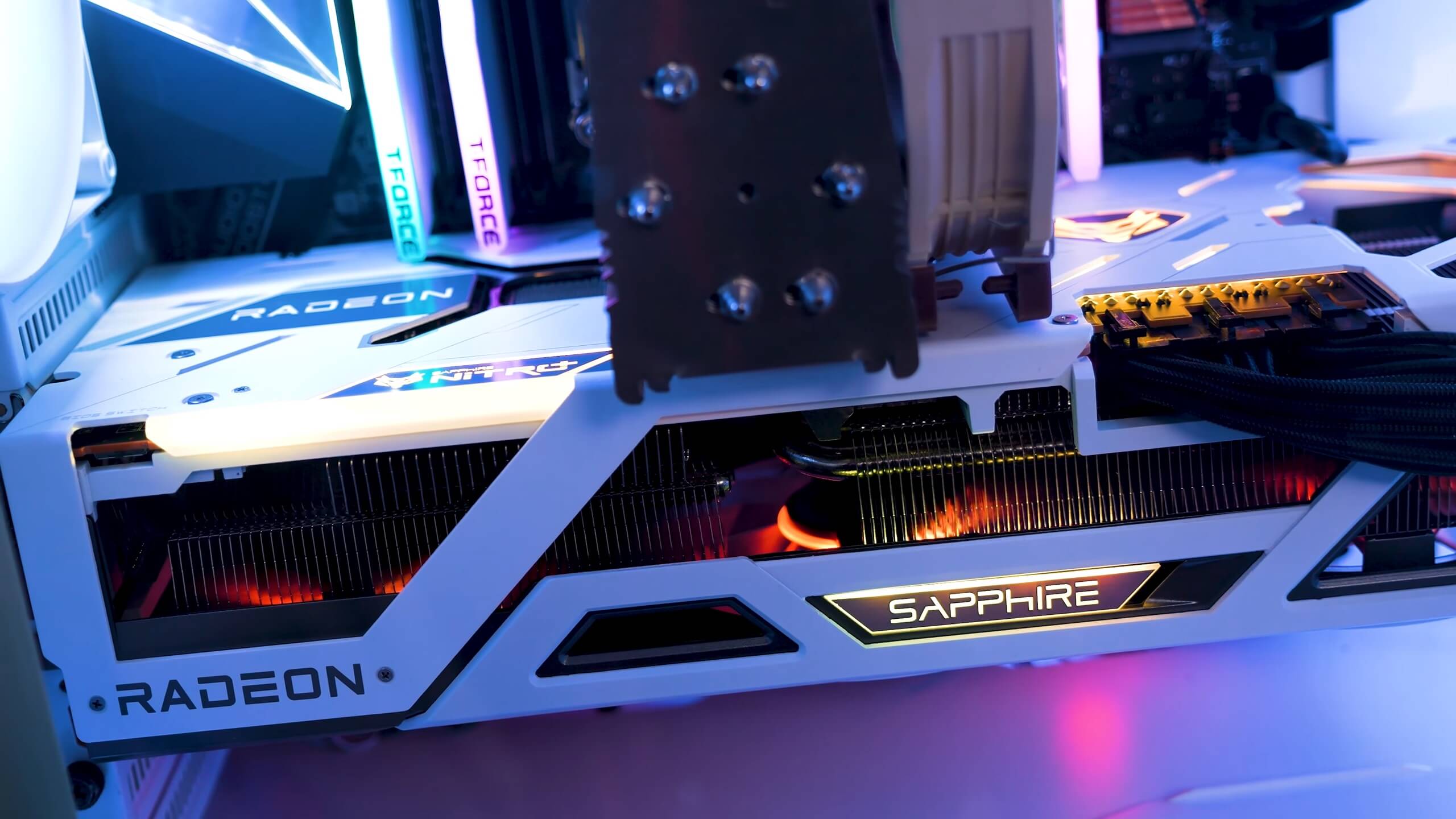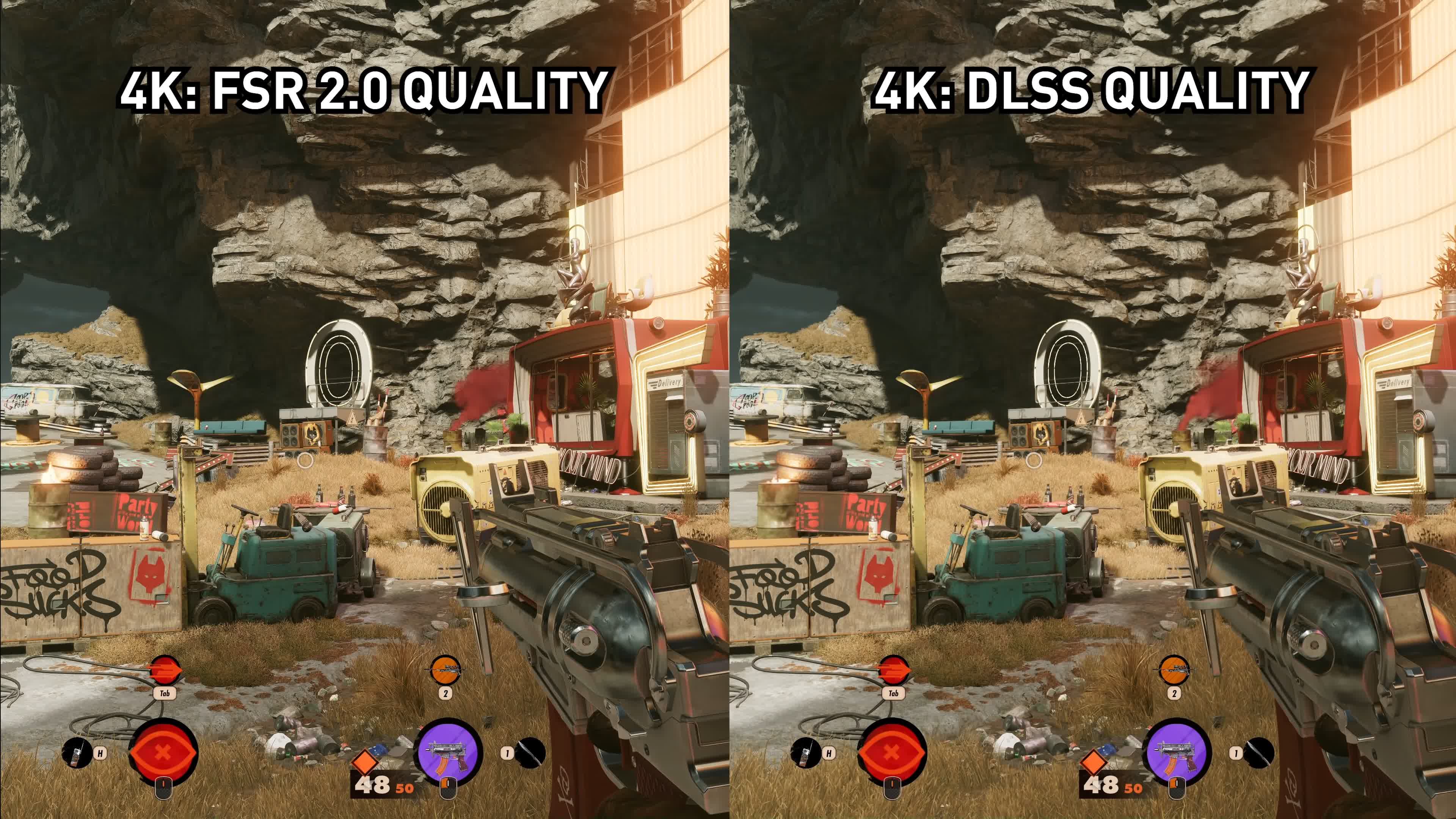In context: Tensor cores have been one of the main advantages of Nvidia's RTX graphics cards, enabling machine learning-based image upscaling, which significantly improves performance for some PC games. A recent repository update suggests AMD could bring something similar to its next GPU series.
This week, AMD patched a Github repository to add a matrix-based instruction set to its upcoming RDNA 3 graphics cards. It could let them perform AI-based image reconstruction similar to Nvidia DLSS or Intel XeSS.
Team red's current reconstruction solution, FidelityFX Super Resolution 2.0 (FSR), already effectively lightens rendering loads while maintaining image quality without AI, but it's a double-edged sword. Deep Learning Super Sampling (DLSS) offers better results but requires the tensor cores in Nvidia's RTX cards, while FSR supports a much greater range of hardware.
The repository update could imply a change to that situation. It adds Wave Matrix Multiply-Accumulate instructions to GFX11 --- a codename for RDNA 3. These matrix operations could lead to the kind of AI machine learning DLSS and XeSS employ. Known leaker Greymon55 sees it as confirmation of AI acceleration for FSR 3.0.
Built on TSMC's 5-nanometer process, RDNA 3 promises to improve performance over AMD's RX 6000 GPUs from 2020. It will feature 50 percent better performance per watt, rearchitected compute units, and a next-generation Infinity Cache. The latest rumors predict the cards will launch between late October and mid-November.

